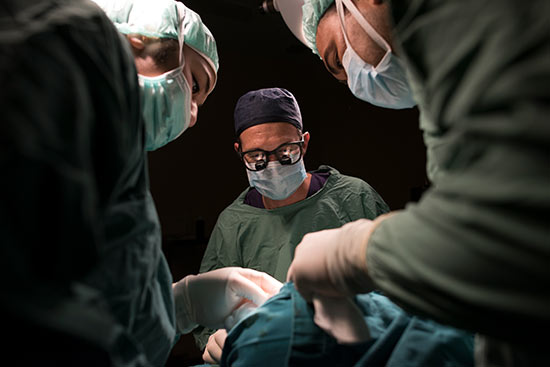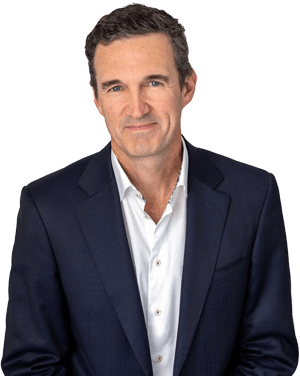Rhinoplasty
Rhinoplasty can alter the shape and function of your nose
Read more to find out:
- What rhinoplasty can achieve
- What the surgery involves
- Nine things you need to take into consideration

Your guide to rhinoplasty
Rhinoplasty is an intricate procedure which allows your surgeon to change different aspects of your nose for either cosmetic or functional reasons. Often both aspects are changes as the appearance and function of the nose are interlinked.
Rhinoplasty is a common surgical procedure and can change the shape or size of the nose for cosmetic reasons, or to correct defects that may have occurred as the result of an accident.
Mr Morgan has a particular interest in rhinoplasty surgery and we treat many patients seeking to change the shape or function of their nose. Our goal is to produce a nose that functions properly and suits your face.

What are the benefits of this procedure?
Our goal is to produce a nose that functions properly and suits your face. Your wishes about the type of nose you want are listened to carefully, and you will be given a realistic appraisal as to what can be achieved with surgery. Surgery may change many of the features of your nose, including: shape, prominence of the bridge, position, appearance of the tip, overall size and symmetry, birth or post-traumatic defect, relieve breathing problems.
Is Mr Morgan experienced in this procedure?
Rhinoplasty is a special interest of Mr Morgan. He performs this type of surgery regularly, and has undertaken additional training in this procedure. At your consultations, Mr Morgan will show you before and after photos of patients who have also undergone this procedure, highlighting the types of changes that can be made. These results are specific to these patients, and may not accurately reflect the types of result you may achieve. All results can vary for a number of reasons, including differences in genetics and original appearance, as well as differences in healing and recovery. Despite all care being taken, complications can and do occur, and can also affect the final result. Occasionally, revisional surgery is required.

How is it performed?
The surgery is usually performed under general anaesthesia and as either a day procedure or overnight stay. Most of the surgery is done from within the nostrils, but occasionally a small external incision needs to be made. A splint is worn for a week post-surgery and bruising and swelling will generally have settled after two weeks.
How long will I need to recover?
Everyone will experience anaesthetic or recover from an operation differently. Although uncommon, complications can also occur and result in a longer recovery time. Generally, most patients will recover sufficiently in two weeks to return to social activity and office-based work. More physical activity may require an extra week.
Specific risks and Complications
Rhinoplasty has several potential specific risks:
- Infection, nose bleeds, prolonged swelling, prolonged redness, numbness of the nose, residual asymmetry or irregularity, poor quality scarring, nasal obstruction, nasal collapse, loss of sense of smell and taste, dissatisfaction with the result, need for revisional surgery
- This is not an exhaustive list of potential risks. Every patient responds differently to surgery and anaesthesia, and can heal and recover differently. Individual results can vary. The results experienced by one patient do not always reflect the results other patients may achieve. Potential outcomes and possible variations will be discussed during your consultations
All Surgical Procedures Carry Risks
Before proceeding, you should seek a second opinion from an appropriately qualified medical practitioner.
Individual results may vary due to a number of factors, including genetics, and variations in healing and recovery, and the potential for complications. The outcomes experienced by one person do not necessarily reflect the outcomes that other people may experience. Potential outcomes and possible variations will be discussed during your consultations
Cosmetic surgery is real surgery, and will most often require a general anaesthetic. All surgery will require a period of recovery before returning to normal activity, as outlined in the particular procedure information. Although uncommon, complications can and do occur, and may affect the final result of your surgery. The potential risks will be discussed fully during your consultations, and you will have the opportunity to ask questions about the various risks in your particular circumstances. Risks may include the general risks of surgery, as well as the risks specific to the procedure, and include poor quality scarring, excessive bruising and swelling, infection, bleeding, pain, asymmetry, nerve injury, anaesthetic complications, drug reactions, unsatisfactory cosmetic outcomes, the need for further surgery, and permanent disability and death.
As a specialist plastic surgeon, Mr Morgan is appropriately trained and qualified to deal with complications of surgery, including the ability to admit you to hospital, if required.
Who should/should not consider this type of surgery?
The best results are achieved in those with a clearly defined concern and realistic expectations about what surgery can achieve. In situations where this is not the case, the outcome from surgery may often be disappointing.
You should not consider this type of surgery as a response to a personal or professional crisis, or under the encouragement of somebody else. Any decision to undergo surgery needs to be for the right reasons. All surgery entails an element of risk, and you should not make any decision regarding surgery at a time of stress.
Rhinoplasty Melbourne
Being healthy and happy with your decision increases the chances of achieving a satisfactory result. Smoking, other medical conditions, and being overweight can make surgery unsafe. These and other risks will be discussed with you at the time of your consultation.

